Housing: Design Considerations
Housing Report
Design Considerations
Housing Types
Homes can either be stand alone or cluster units. Stand alone refers to individual houses while cluster units refer to individual homes that share walls. It is important to consider and analyze the advantages and disadvantages of these building styles before moving forward with preliminary designs.
|
Cluster Units |
Stand Alone Housing |
|
Uniformity |
Increased potential for personalization |
|
Conserve space |
Occupy more space |
|
Cheaper |
More expensive |
|
Less heat loss |
More heat loss |
|
Decreased privacy |
Increased Privacy |
|
Less windows/ light |
More windows/ light |
|
Decreased ventilation |
Increased ventilation |
Currently within Monwabisi Park, there is minimal free space, no infrastructure and little room for new buildings. Cluster units are a convenient way to rearrange already existing free space. They combine the space that would have been between houses into one larger, more advantageous lot. Another pressing issue is cost. Since cluster units utilize shared walls, they use fewer materials and consequently are cheaper. For these reasons, the advantages of building cluster units within Monwabisi Park outweigh the disadvantages.
Although cluster units are the more beneficial option, the disadvantages cannot be overlooked. A driving factor of whether or not cluster units are a viable option is the assumption that community members are willing to give up some privacy. Another aspect that must be taken into consideration is ventilation. During the summer heat, many community members struggle to keep their shacks cool and ventilated. Since cluster units provide less ventilation, it is important to address this concern in another way (Saieh, 2008; Garcia et al., 2008).
Cluster Units
There are a wide range of cluster unit possibilities and considerations. Row housing refers to housing units that share walls and conserve space through a horizontal focus. There are four main styles of row housing units. These styles are illustrated in the illustration below. Solid lines represent shared walls, while dashed lines show walls that are unshared.
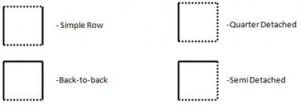 The most common row housing style is simple row units. In simple row units, each unit shares two side walls with a neighbour while the front and back walls are open to the street or yard. Typically, the units are the same or extremely similar in design. In back-to-back row housing, not only do the units share side walls, but they also share back walls. Often back-to-back style units will utilize the entire lot between two roads. Although back-to-back style units create even more free space, the disadvantages of privacy, light, and ventilation are also heightened. Quarter detached units are most commonly used as the end units of a simple row. Similarly, semi detached units are often used as the end units of a back-to-back row (Çagdas, 1996).
The most common row housing style is simple row units. In simple row units, each unit shares two side walls with a neighbour while the front and back walls are open to the street or yard. Typically, the units are the same or extremely similar in design. In back-to-back row housing, not only do the units share side walls, but they also share back walls. Often back-to-back style units will utilize the entire lot between two roads. Although back-to-back style units create even more free space, the disadvantages of privacy, light, and ventilation are also heightened. Quarter detached units are most commonly used as the end units of a simple row. Similarly, semi detached units are often used as the end units of a back-to-back row (Çagdas, 1996).
Whereas row housing conserves space horizontally, high rise buildings conserve free space in a vertical fashion. In a high rise building, family units are built one on top of each other. The amount of free space conserved in a high rise building is directly proportional to the number of units that are stacked on top of each other. Therefore, a three story, three family building will save three times as much space as if there were three individual houses (Çagdas, 1996). Despite the obvious benefit of free space, high rise buildings are not a practical choice for Monwabisi Park. Sometimes people associate high rise apartment style buildings with bleak apartheid housing projects. Two of these reasons are cultural. There is an understanding that no blade of grass shall grow taller than the rest. This is known as “Tall Poppy Syndrome.” There is a general sense of equality among community members. Another cultural belief is that each resident should have access to a ground floor. South African culture emphasizes a strong connection with the earth and specifically the ground. It is important for one to respect and maintain this connection. A third reason why high rise buildings are impractical is their lack of adaptability. It is extremely difficult to build an addition onto a high rise building (Saieh, 2008).
Combining high rise buildings and row housing is often referred to as stacked terrace housing. In stacked terrace housing, families live above one another, as well as beside each other. Although stacked terraced housing saves the most amount of space, it is not a practical choice for Monwabisi Park because of the high rise element. Although high rise buildings are not a practical choice, one cannot overlook single family, multi-story housing. By adding a second floor onto a single family unit, families can double their house size while keeping the same footprint. Combining single-family, multi-story housing with row housing is agreeable with South African culture and a practical choice for Monwabisi Park.
When proposing new designs for redeveloped housing within Monwabisi Park, it is ideal to find a solution that not only conserves free space, but also respects the community’s wants and needs. Building off of the above considerations, the team suggests the layout shown below. In the illustration, each colour represents the unit one family would occupy. It is a two story, simple row cluster unit. A simple row unit conserves space without significantly hindering ventilation. Each unit still has at least two walls open for windows. Furthermore by keep the building shape a rectangle, one can lower cost and simplify construction. Because the span from front to back wall is only 6m, only one structural beam is needed for the entire structure. Also a simple non-structural roof can be used. These two considerations significantly reduce cost.
 Another proposed housing layout is shown below. It is the footprint for a two story back-to-back cluster housing unit. Although the ventilation of middle units are significantly hindered, the building is cheaper to build per unit and conserves even more free space that a simple row. Once again the team proposed a rectangular building to keep construction simple. This layout would require two structural beams and a gable roof which does not significantly increase cost.
Another proposed housing layout is shown below. It is the footprint for a two story back-to-back cluster housing unit. Although the ventilation of middle units are significantly hindered, the building is cheaper to build per unit and conserves even more free space that a simple row. Once again the team proposed a rectangular building to keep construction simple. This layout would require two structural beams and a gable roof which does not significantly increase cost.
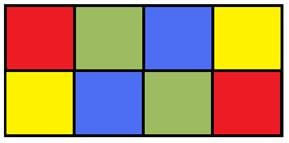
Adaptability
When shacks are built, residents will often start with a one room home. Over time, they will add onto their shack as income allows. As a family grows, the home will grow, change, and evolve with them. New housing options are likely to be unsuccessful if we ignore this part of their culture. If we do not plan for additions, residents will have to move and relocate every time their needs change. New buildings will become insufficient and useless for growing families. Furthermore, many residents will not be able to afford four room houses as their first investment. For this reason, plans for redevelopment should be flexible or focus on a rental intensive system. Monwabisi Park could develop a wide range of housing options and develop a rental system where residents can move as their needs change. A rental intensive system would make the process of relocating residents and allocating new housing more difficult, because similar family sizes would have to be grouped in different sized housing units and currently they are spaced randomly amongst the park. Although this is one option, our team suggests building upon the theory of adaptability instead.
When developing new building plans, it is important to anticipate growth and keep the community’s needs in mind. New building plans should allow residents room to grow. At the same time, growth should not disturb roads, free space and common areas (Osman, 2005). The illustrations below show where adaptability can be built into the layout that was proposed in Housing Types.
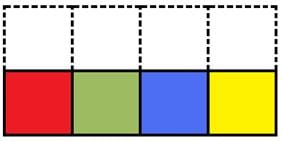 By allotting free space within the dotted areas, home owners could add one story, two stories, or even a garage if need be. Home owners would have a fair amount of freedom to build accordingly to their needs as their financial situation allows. Although additions will give residents needed interior space, they will also take up free space and decrease the size of yards. Furthermore, additions significantly decrease the ventilation of middle units. It becomes even more important to address ventilation in another way. Since ecoBEAM Technologies is a thermally efficient construction method, this is not a concern.
By allotting free space within the dotted areas, home owners could add one story, two stories, or even a garage if need be. Home owners would have a fair amount of freedom to build accordingly to their needs as their financial situation allows. Although additions will give residents needed interior space, they will also take up free space and decrease the size of yards. Furthermore, additions significantly decrease the ventilation of middle units. It becomes even more important to address ventilation in another way. Since ecoBEAM Technologies is a thermally efficient construction method, this is not a concern.
Shape and Orientation for Safety
Whereas building style is one of the easiest ways to achieve densification, building shape and orientation play key roles in promoting a safe and a positive community atmosphere. It is possible to significantly reduce crime and vandalism through sensitive design (Osman, 2006). Many crimes within Monwabisi Park are crimes of opportunity, facilitated by poor visibility (Garcia et al., 2008). By orienting houses towards roads and community spaces, one can increase visibility and in turn, make these areas safer. By using varying shapes of row housing, one can also increase the visibility. The illustration below shows the footprint of a crescent row housing design. The curved geometry of the structure creates a sheltered court yard in the middle. In this design, the building geometry is used to maximize exposure and visibility of the courtyard. It is important to use building shape and orientation to promote a cohesive community. By using design to create courtyards and safe common areas, redevelopment efforts are more likely to be successful (Osman, 2006).
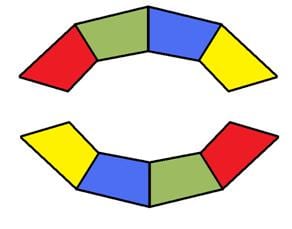 Although the design above promotes a safe courtyard, there are a few drawbacks that make this option not viable. The most notable downfall is the spatial footprint. On average, circular shaped layouts conserve less free space than rectangular layouts. For this reason, row housing units are typically laid out in a rectangular in shape. Furthermore, rectangular buildings are cheaper and easier to build. Although the circular design would be difficult to implement, the concept and theory demonstrated are still important considerations. One can use the orientation of multiple rectangular row units to achieve a similar result. The illustration below shows how a semi-sheltered courtyard can be created from two simple row units.
Although the design above promotes a safe courtyard, there are a few drawbacks that make this option not viable. The most notable downfall is the spatial footprint. On average, circular shaped layouts conserve less free space than rectangular layouts. For this reason, row housing units are typically laid out in a rectangular in shape. Furthermore, rectangular buildings are cheaper and easier to build. Although the circular design would be difficult to implement, the concept and theory demonstrated are still important considerations. One can use the orientation of multiple rectangular row units to achieve a similar result. The illustration below shows how a semi-sheltered courtyard can be created from two simple row units.
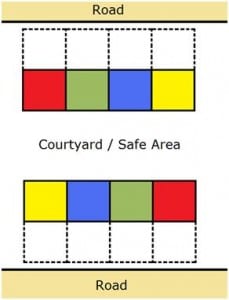
Utilizing the Environment
Building shape and orientation are important considerations for design. Since ventilation and insulation are a significant problem in current shacks, it is important to look for a sustainable solution to this issue. One of the most cost effective solutions is to utilize the environment to its fullest potential. The first step toward utilizing the environment is taking advantage of the sun’s energy. This is taken into consideration when determining the orientation of the house. Since Cape Town is below the equator, the sun will pass through the sky on the northern side of the home. For this reason, the largest windows or openings should be situated on the northern side of the home. During the winter months, residents will be able to use the sun’s energy as an alternative source of heat. The second step is to consider the building’s shape. In the winter months, the sun passes low on the horizon and the temperature is quite low. On the contrary, during summer months the sun is higher in the sky and the temperature in Monwabisi Park is much higher. One of the biggest problems in the summer is ventilation and keeping the house cool. The easiest way to keep the home cool is reduce solar heat gain. An area in the shade will be cooler than an area in direct sun light. By creating an awning over the window, residents can shade their home from the sun during the summer months and still let heat in during the winter months (Garcia et al., 2008).
Roofs
Roofs are an important consideration when designing new buildings. The majority of problems with the current shacks in Monwabisi Park are weather related and stem from poor construction. Varying roof styles are an effective way to protect a building from the elements. When choosing a roof, the cost, build time and ease of installation should be taken into consideration. Another aspect that should be considered is the particular weather patterns of the region. Below is a brief bulleted summary of four traditional roof styles (Pierce-Alan, 2009).
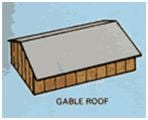 Gable Roof
Gable Roof
- Most common roof type
- Second easiest to build after flat and shed style roofs
- Accommodate a variety of ventilation techniques
Hip Roof
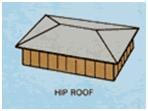 Almost as popular as Gabled roofs
Almost as popular as Gabled roofs- Most difficult to build
- Difficult to ventilate
- No valleys on the ends eliminate leaks and wear
- Most effective protection from the elements when built correctly
- Expensive
Flat Roof
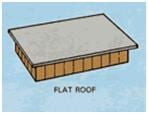 Easiest to build
Easiest to build- Can be built quickly
- Difficult to ventilate
- Prone to leaks, wear and may sag
- Inexpensive
Shed Roof
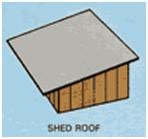 Slope of 16 cm per metre or greater
Slope of 16 cm per metre or greater- Slopes of 42 cm per metre can last as long as gable roofs
- Easy to build
- Generally, wear quickly
- Prone to leaks, shifting and sagging
- Inexpensive
After taking the above into consideration and working closely with ecoBEAM Technologies, our team recommends shed style roofs for the simple row housing of Monwabisi Park. Shed style roofs are inexpensive, can be built quickly and are easy to install. Since funds are limited, it is important to keep construction cost as low as possible. Furthermore by using one of the simplest roof types, it furthers the benefit that ecoBEAM houses can be built with less skilled labour. For back-to-back redeveloped housing units, our team recommends gable roofs. Gable roofs are still easy to install and relatively inexpensive because they are essentially two shed style roofs.
In addition to roof style, the material a roof is made from is another extremely effective way to protect a building from the elements. Different roof coverings vary in cost and durability. Below is a brief bulleted summary of four traditional roof coverings (Pierce-Alan, 2009).
Asphalt Shingle
- Last 15-30 years
- Most popular
- Second layer can be added without having to replace original
- Easy to install
- Low maintenance
Rolled Asphalt
- Lasts 10 years
- Ideal for flat or low sloped roofs
- Easy to install
- High maintenance
- Inexpensive
Tile
- Lasts more than 50 years
- Fireproof
- Waterproof
- Requires a strong roof frame
- Little to no maintenance
- Concrete tiles are less expensive and more readily available than clay tiles
- Expensive
Tin
- If installed correctly can last a life time
- Fireproof
- Cannot be corroded by water or salt
- Little to no maintenance
- Aloud when it rains
- Extremely inexpensive
After taking the above into consideration and working closely with ecoBEAM Technologies, our team recommends tin roofs for the redeveloped housing of Monwabisi Park. Tin roofs are affordable and durable. Tin roofs withstand the elements very well. They are also very easy to install. Furthermore, it’s extremely cheap price make it a good choice for new housing.
Interior Layouts
The number of rooms varies from shack to shack within Monwabisi Park. There are a few rooms consistent through most houses. A lounge is a room used for socializing and eating. It should be the first room in the house. It generally has couches or chairs and probably a coffee table. The kitchen is often directly connected to the lounge, possibly even without a wall to divide them. The kitchen is a place for cooking and socializing. It can contain a fridge, sink, stove and small table or counter for food preparation. Other rooms that shacks may have are bedroom(s) and a washroom. The bedroom can be one large room for one or more beds or subdivided with walls. The team has proposed that the second floor of redeveloped housing is on large room for bedrooms. The residents could subdivide the room as they see fit. Toilets for most houses are communal, but as for wash rooms, they are generally located adjacent to the bedroom and would have a shower and sink.
Next Section: Proposed Designs
Back to: Housing Report
Author: WPI CT09 Buildings


